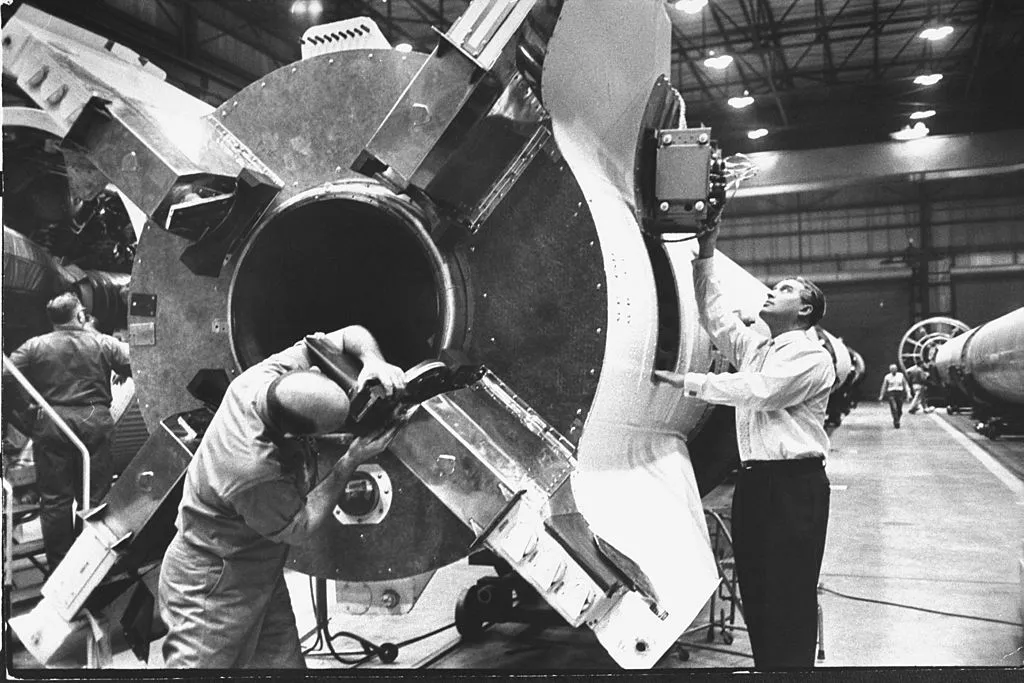Wernher von Braun was a pivotal, if controversial, figure in the space race. Born to an aristocratic family in the Prussian town of Wirsitz (now in Poland) in 1912, he was inspired in his teens by the work of German physicist Hermann Oberth, and became a rocket scientist.
Earning his doctorate in rocket combustion in 1934, the year after Hitler came to power in his homeland, he joined the Nazi party and became technical director of the German rocket programme. By 1942 he had successfully developed the infamous V-2 rocket that was to wreak such havoc on London during the Blitz. Equally notorious was the programme’s use of slave labour – an uncomfortable legacy that would stay with von Braun for the rest of his life.

Instead of being tried as war criminals, however, von Braun and his team were secretly whisked away to the US after the war and recruited to the American rocket programme as part of Operation Paperclip. The scientists saw defecting to the US as their best option for continuing their work. Germany was in ruins, the UK’s rocket programme was in its infancy and the whole team feared its fate at the hands of the Russians. After demonstrating the V-2 rocket to the US army, von Braun became technical director of the Guided Missile Development Group at Redstone Arsenal, Alabama, in 1950.
The public perception of von Braun was changed somewhat after a surreal offer from Walt Disney in 1954. Keen to promote his new Disneyland theme park, Walt turned to von Braun to host Man in Space – TV infomercials publicising the park’s fantasy theme. He became a space evangelist, preaching to an audience of 42 million viewers.
In 1960, von Braun became the first director of NASA’s Marshall Space Center and found himself centre stage in the space race. He never met Sergei Korolev, his Russian rival in this Cold War face-off and it was no coincidence that with Korolev’s death in 1966, the Soviet challenge effectively evaporated.
Von Braun’s rockets were at the heart of the Mercury, Gemini and Apollo space programmes, not least the Saturn boosters that propelled man to a first Moon landing in 1969. Indeed, had von Braun not insisted on additional tests for safety, Alan Shepard’s Freedom 7 would have beaten Yuri Gagarin’s Vostok 1 into space by three weeks in 1961.
America’s enthusiasm for the space programme cooled after the Moon landing, and von Braun died a frustrated man in 1977, still dreaming of missions to Mars. Had he lived, worse would have followed, as documents about his Nazi past were declassified in 1984.
His life remains highly controversial, but his mind was unquestionably brilliant.
Biography
1912 - Born 23 March in Wirsitz, Prussia (now Poland).
1925 - Inspired by Hermann Oberth to pursue rocketry.
1934 - Graduates from Berlin Technical University.
1937 - Becomes technical director of rocket research facility at Peenemünde.
1937 - Joins the Nazi party.
1940 - Joins the SS.
1943 - Slave labour introduced at Peenemünde to produce V-2.
1944 - Arrested by Gestapo as a ‘communist sympathiser’; released on Hitler’s orders.
1945 - Surrendered to American forces and secreted to the US.
1947 - Returns to Germany to marry his cousin, Maria Louise von Quistorp.
1950 - Begins developing Redstone rocket.
1955 - Becomes a US citizen.
1955 - Presents Man in Space on US TV to promote Disneyland.
1958 - Launches the West’s first satellite, Explorer 1, with modified Redstone rocket.
1960 - Becomes director of the Marshall Space Flight Center.
1960-69 - Develops Saturn rocket for Apollo programme.
1969 - Expresses optimism that Saturn V could be developed for a Mars mission.
1970 - Appointed NASA’s Deputy Associate Administrator for Planning.
1972 - Retires from NASA.
1973 - Diagnosed with kidney cancer.
1975 - Becomes president of National Space Institute.
16 June 1977 - Dies of pancreatic cancer, aged 65.
Read more Apollo astronaut biographies:
- Neil Armstrong: Apollo 11 mission commander
- The last man on the Moon: Gene Cernan in pictures
- John Glenn – the space pioneer’s life in pictures
Follow Science Focus onTwitter,Facebook, Instagramand Flipboard